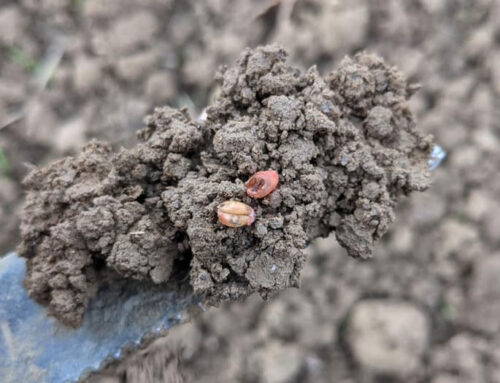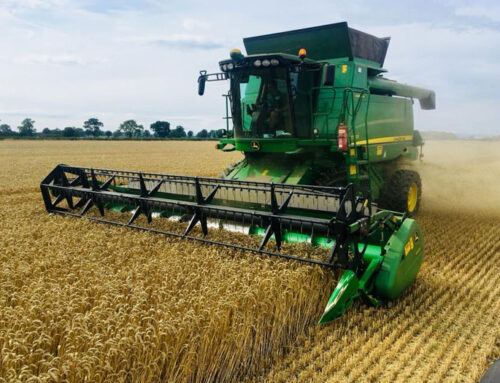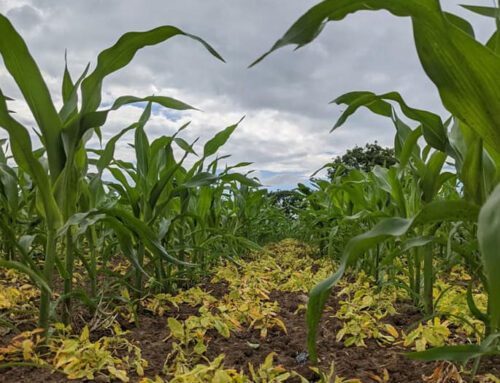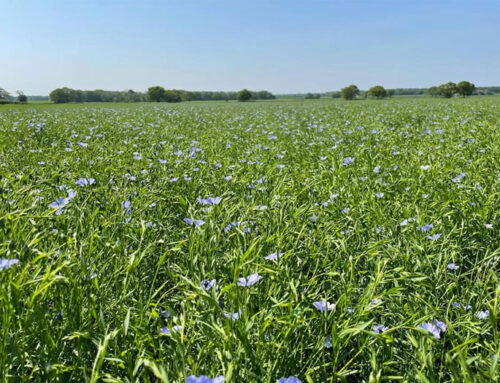Well what a shift in seasons, 8 weeks ago when on farms we joked about the horrendous conditions the land was in with the comments of ‘you wait it will be bone dry in spring and we’ll be crying out for rain…..’ how mother nature has a way of always returning equilibrium. In North Yorkshire we haven’t had any substantial rain for about 4 weeks now and this is starting to show in some of these backward stressed crops, especially late sown winter barleys. More settled weather has allowed the army of tractors and drills to have an excellent run at sowing spring crops and by now the last few stragglers will be going in. The earlier drilled crops are now emerging nicely, but I fear that the later drilled crops which are languishing in clods will be a different story. I stopped recommending any pre-emergence sprays for the spring cereals as the ongoing dry conditions constitute a waste of time and money for their effective use.
Next on the list is fodder beet, a couple of my clients skipped the family egg hunts and started sowing on Easter weekend and from the first fields I have been into have gone in behind a cloud of dust. My favoured herbicide approach for these is the broadacre weed control programme this simple system fits in well with growers who have mixed crops and limited spraying capacity. The final crop in my portfolio to go in the ground will be maize, this however can be left for next month’s article, I like to give you something to look forward to!
Winter wheats were quick off the mark at the beginning of the month however the lack of rain combined with wide swings in temperature have been reduced to a slow trot. Crops drilled in September and early October have leaf 3 emerging and will be due the T1 at the end of the month. Yellow rust is bubbling away nicely and will be a key in the choice of fungicide, although Septoria is the ever-present threat the fear of turning North Yorkshire yellow scares me more! The long dry spell has certainly made a review of the T1 options a priority and the lower risk opens opportunities to adjust product choice and rates. The array of spring grass weed products used and the dry weather has certainly checked the crops and I will be using that as a first growth regulator, whether there is any rain in the future will determine what will be used next, possibly a slightly higher chlormequat dose on livestock farms than strictly arable units.
In the north well established and tillered winter barleys are like the number of tries I have scored this season from 80 metres out…..rare to find! Those that have been sown early and tillered well have great potential. These have received a full growth regulator treatment and will have had all the nitrogen now. Any late barleys sown through sheer desperation will be what they will be and have inputs tailored accordingly.
Winter oilseed rapes are also a mixed bag, some are well into flower while some are waiting to hit second gear. Its this time of year when we start to see the devastating effect cabbage stem flea beetle larvae can have with crops still being written off. Crops have been slow to flower, and this adds to their woes with pollen beetle further impacting on the crop. To add more woes onto these beleaguered crops I am finding more seed weevil than normal. Please give the crop a break!
Again, I’d like to wish the best to the many farmers carrying on with everyday life through this horrid unpredicted time and continuing to keep the nation with full tummies. Please stay safe and keep up the good work, the United Kingdom needs you.




